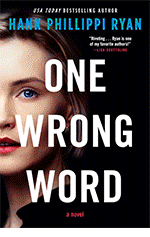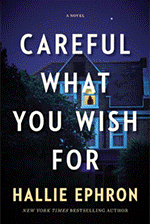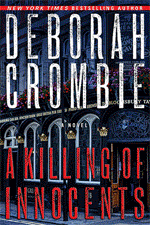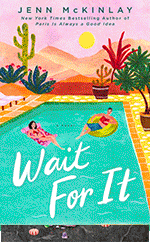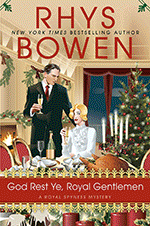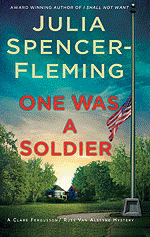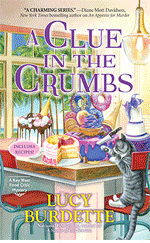DEBORAH CROMBIE: Here at JRW we all adore Catriona McPherson for her wonderful Scottish historical mysteries and her clever contempory California mysteries, not to mention her wit, kindness, and charm. But I'll add something else to the list--I think Catriona is a secret time traveler and that she's really lived in post-war Edinburgh, because when I read her new series featuring welfare officer Helen Crowther, I would swear Catriona has a direct line to the past. If you missed the first book, In Place of Fear, rectify that immediately! And now Helen Crowther is back with a new adventure, (and more wonderful Edinburgh dialect that I wish Catriona could demonstrate for us.)
Catriona says:
My working title for The Edinburgh Murders was Next to Godliness. I’m really bad at titles, I know, but it did make some kind of sense because it opens with Helen Crowther, a welfare officer attached to a doctor’s surgery in one of the poorest bits of Edinburgh, squashed into a cubicle at the public baths, helping Mrs Hogg – a lady of some stature – to wash.
“I like a guid hard scrub, Nelly,” Mrs Hogg says. “Dinnae be
tickling me.”
(I should say here that there’s a glossary in the book,
although guid and dinnae aren’t too hard to interpret, right?
Also, the glossary is at the front this time. In Book 1 – In Place of Fear
– the glossary was tucked away at the back and a lot of people did a lot of
googling before they found it. Oops.)
PIC 1 - jacket
The building where this scene takes place is still there, as are lots of the public baths in Edinburgh, but only the swimming pool is now in use. Even by the time I was getting on the bus with my rolled-up towel, the private bathing cubicles on the gallery level of these establishments had been swept away or repurposed as changing rooms.
PIC 2 – ceiling of baths.
This explains me always wondering why swimming pools were
even called “baths” in the first place. But I was a wee girl.
Improvements in domestic plumbing don’t explain why one book group I talked to last
year were enchanted to “discover” that
Scotland, like Japan, has communal ablutions. “No,” I explained. “It’s just
that poor people didn’t have bathrooms at home in the late 40s.” Stunned silence from them. Stunned silence
from me. I mean, it was in a very swanky Sacramento neighbourhood this book
club, but surely some of the women had grandparents who boiled kettles and
filled tin baths in front of the fire? I clearly remember Oprah Winfrey
recounting how horrified she was the first time she was shown an indoor loo. “I
can’t do that inside someone’s house!” tiny Oprah whispered. D’awww.
I didn’t wondered why the public baths had such soaring
ceilings, though, or if I did I probably thought it was for the acoustics –
there’s nothing like the earsplitting sound of fifty children shrieking
repeatedly in a glass cathedral. If I hadn’t come across this next photograph,
I would never have worked it out:
PIC 3 – acrobats
Yep, it was an aerial gym, with water landing laid on for
the over-confident. Water or shrieking wee kid landing, I suppose. They
were very different times. In any case, it was a feature of all Victorian baths
to be over the top; the Turkish baths in Harrogate are like something from the
Arabian Nights. I haven’t got any photos of the inside because the steam would
wreck my phone, but check it out here.
I spent the happiest hours of my otherwise miserable
academic career in those Turkish baths, stark naked, with my head of dept,
Prof. Katie Wales (renowned James Joyce expert who also wrote a Mickey Mouse
joke book), and our other women colleagues, a long way from the stuffy School
of English where tweedier co-scholars sipped sherry during classes (I’m not
kidding) and never wrote any joke books at all. Coincidentally, Harrogate is
the setting for England’s best known crime-writing jamboree – Theakston’s
Old Peculier Festival – and Val McDermid once overheard something in the
steam room that would make your eyebrows curl. (I couldn’t possibly repeat it
here. (But DM me.))
PIC 4 – At Harrogate with Ali Karim
This is my favourite of many Theakston’s Festival pictures,
because I can never decide if I’m looking at Ali Karim thinking “Come live with
me and be my love” or “I’m going to kill you with my shoe”.
All of which is to say, if you like the sound of a boiled
man in a bathtub and a return trip to the scene of the crime with three grubby
wee kids and a nit comb, then The Edinburgh Murders might be for you,
and please comment to be entered into a giveaway for a signed hardback. If you
can’t think of anything you’d like to read about less . . . I get it. I started
life in a family of six with one bathroom, shared bathwater and no shower. Now,
after fifteen years in America with a master bath off my bedroom, and two
basins in it so I don’t even see the toothpaste spills of my own husband . . . I’m
ruined forever.
Cx
Edinburgh, 1948: Welfare Officer Helen Crowther has enough on her plate between her hectic job, her complicated love life, and her growing reputation as a troublemaker. Last year’s scandal did nothing to help with the disapproval she already gets as a woman in her line of work.
All she wants now is to focus
on doing what she loves: helping the poor of the Fountainbridge ward in the
city of Edinburgh. The last thing she needs is another string of murders to
distract her . . .
But when a gentleman
dressed in working-man’s clothing winds up dead right under Helen’s nose, and
she catches her own father in a very risky lie, Helen is propelled back into
the dark world where class rules, justice is hard to come by and gruesome death
is everywhere.
Helen has already learned
some hard truths about her city, but this investigation is about to reveal just
how deep corruption can go . . .
Serial awards-botherer, Catriona McPherson (she/her) was born in Scotland and immigrated to the US in 2010. She writes: preposterous 1930s private-detective stories about a toff; realistic 1940s amateur-sleuth stories about an oik; and contemporary psychothriller standalones. These are all set in Scotland with a lot of Scottish weather. She also writes modern comedies about a Scot-out-of-water in a “fictional” college town in Northern California. Catriona is a proud lifetime member and former national president of Sisters in Crime. www.catrionamcpherson.com
And that somehow when I lived in Edinburgh my ex neglected to introduce me to the public baths, which I now think was a grave ommision.
Stop in to say "hi" to Catriona and comment to be eligible for a signed copy of THE EDINBURGH MURDERS!







.jpg)




























